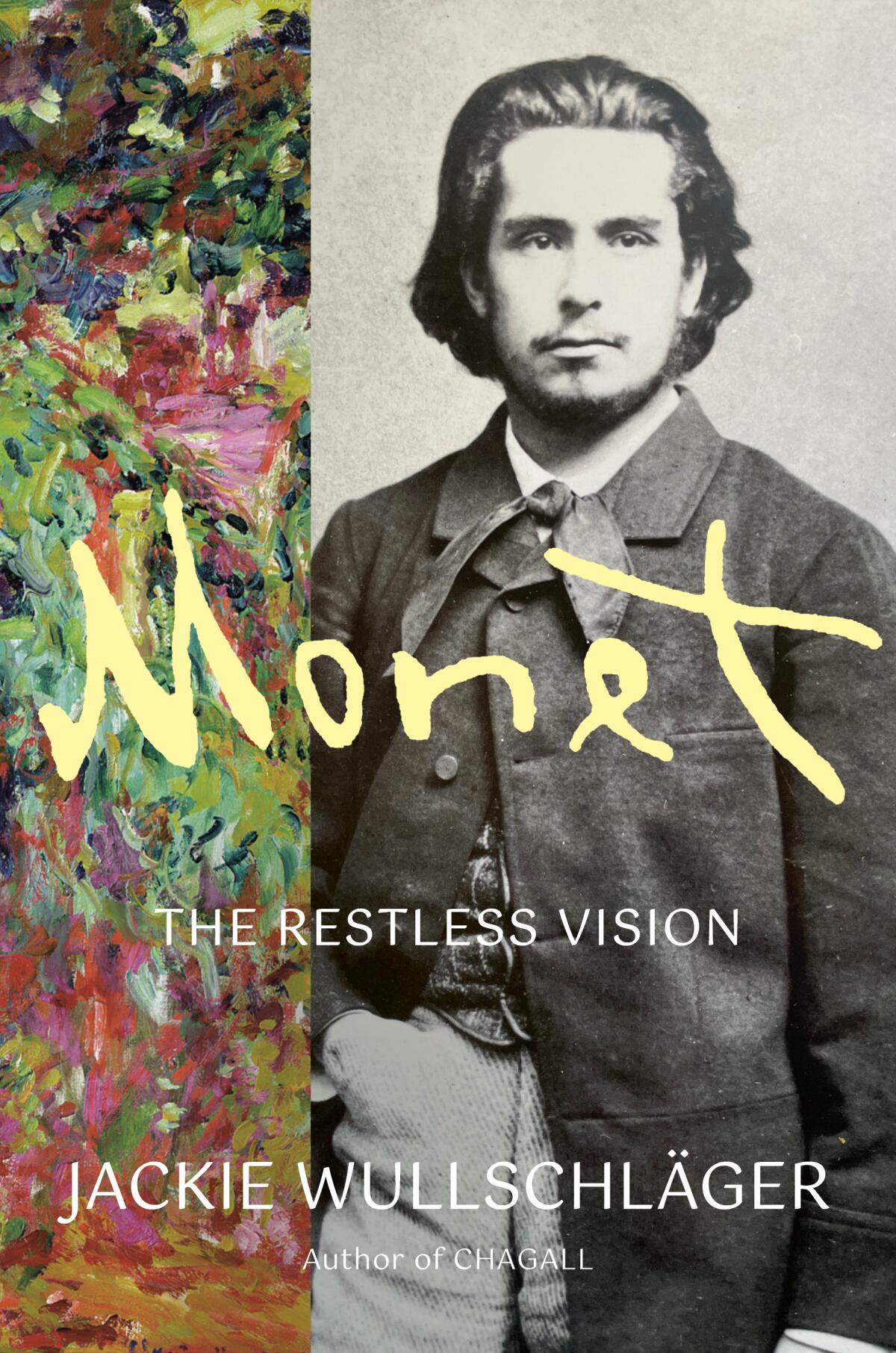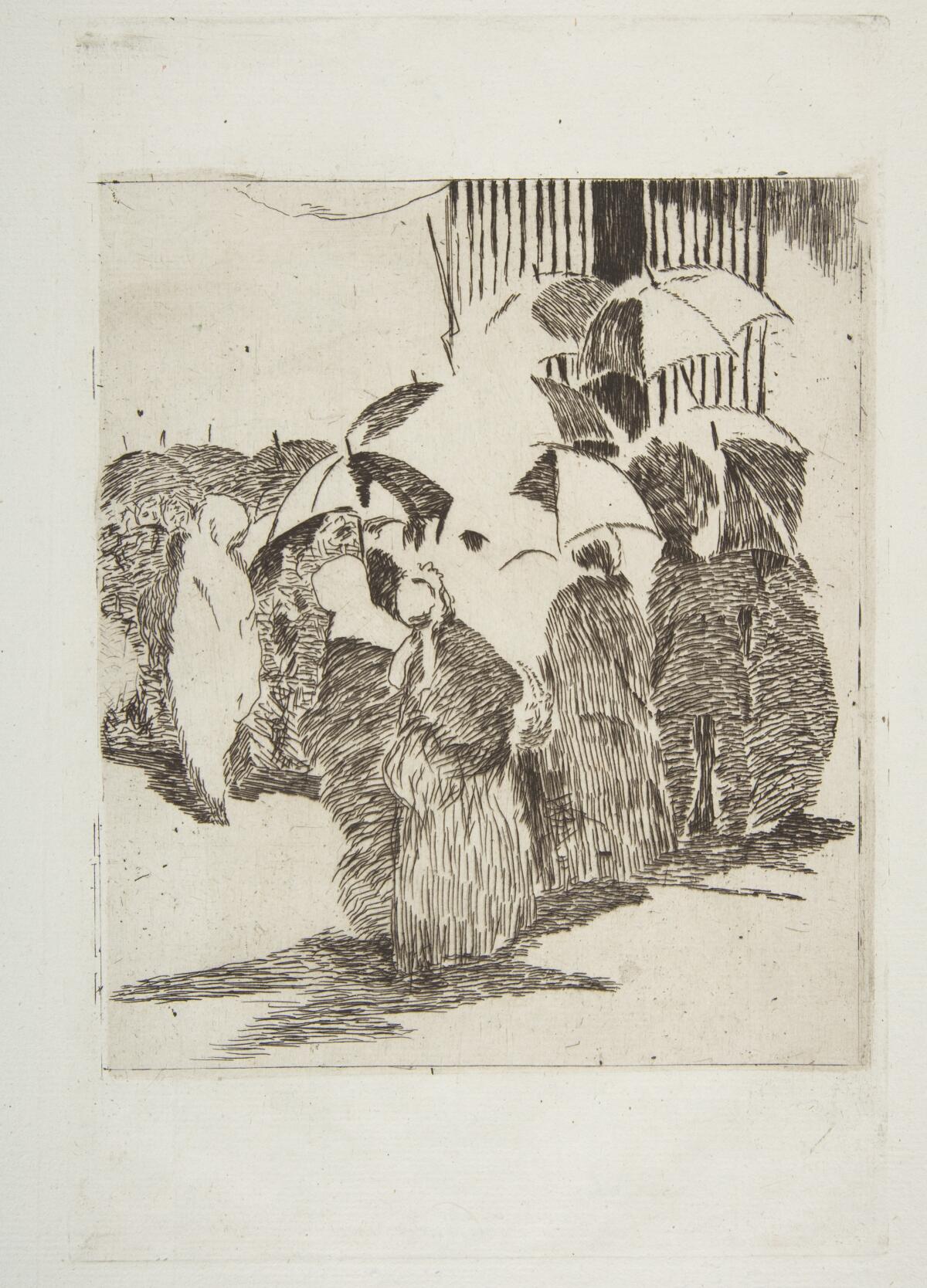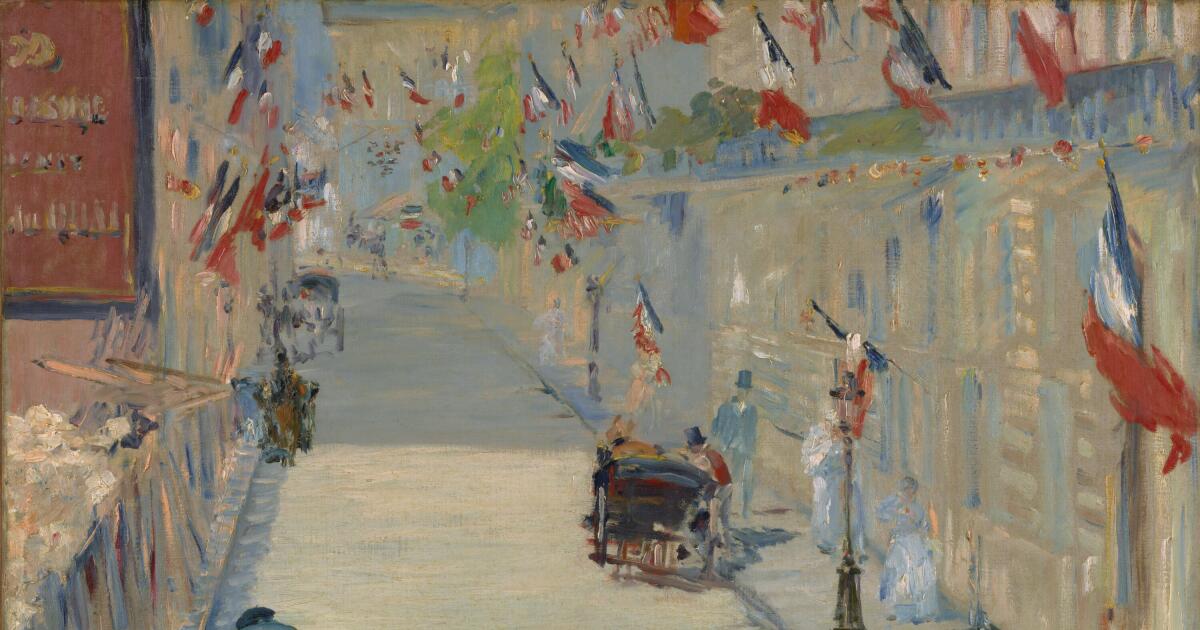Book Review
Paris in Ruins: Love, War, and the Birth of Impressionism
By Sebastian Smee
Norton: 384 pages, $35
If you buy books linked on our site, The Times may earn a commission from Bookshop.org, whose fees support independent bookstores.
Book Review
Monet: The Restless Vision
By Jackie Wullschläger
Knopf: 576 pages, $45
If you buy books linked on our site, The Times may earn a commission from Bookshop.org, whose fees support independent bookstores.
Revolution was in the plein air. During the reign of Napoleon III, the Second French Empire had colonized extensively abroad and modernized at home, with the construction of Paris’ boulevards and the city’s glorious ascent as the global capital of culture and fashion. The empire had brought a stability to France after decades of bloodshed and tumult, but republican passions still stirred, particularly among intellectual elites and haute bourgeoisie.
What happened on the road to rebellion? This year marks the sesquicentennial anniversary of the debut Impressionist show in 1874, and two exquisite books have arrived to toast the occasion. While they differ in scope, both are graceful, fluent, resonant additions to art history.
A critic at the Financial Times, Jackie Wullschläger has written a sumptuous biography of Claude Monet, the movement’s maestro, limning the innovation beneath his surfaces. “Monet: The Restless Vision” spans the painter’s lengthy life and career, a portrait of an artist mercurial and materialist, ambitious and conceited, yet unstintingly loyal to all in his orbit. She traces his middle-class background as a child and adolescent in seaside Le Havre, water his eternal muse. He chose a less lucrative profession, subsidized by a beloved aunt and better-off friends, such as Édouard Manet. In the 1860s he gravitated toward Manet’s circle in Paris: Degas, Bazille, Cézanne, Berthe Morisot, Pisarro and Renoir. Now lodestars of museums and private collections, these painters buttressed one another during the lean months, the haves tending to the have-nots, united in their distaste for the Salon’s stale, imperious criteria. (Monet eventually owned 14 Cézanne canvases.)

As the Franco-Prussian War commenced, Monet decamped to London, where he sat out the hostilities, palette in hand. Upon his return to France, he and his colleagues worked outdoors, often setting their easels side by side. Monet relied on his first wife, Camille, as his primary model; she posed as four distinct figures in his early “Women in the Garden” (1866). “The Port at Argenteuil” (1874), Wullschläger observes, is “a beacon of the first Impressionist moment. Unified, every part to every other, inviting the eye to enter and linger anywhere, satisfying in its decorative assembly of forms, the arabesques of trees echoing the cloud shapes, it evokes a harmonious atmosphere quite different from the harsh depiction of the broken bridge a few months before.”
After Camille’s prolonged illness and death in 1879, Monet took up with Alice Hoschedé, the estranged spouse of a department-store magnate whose demise allowed the couple to wed, merging their families, a bohemian Brady Bunch. Their villa at Giverny remained a base of operations throughout their lives.

Jackie Wullschläger, author of “Monet: The Restless Vision.”
(William Cannell)
As the century waned, Monet grew bolder: He embarked on several series of subjects portrayed at different hours of day, in varied casts of light. Wullschläger underscores “Haystacks” as a breakthrough, insisting on “contemplation of that moment passing, of the transience of all moments.” She writes: “The short staccato strokes produce waves of colour in multiple layers, suggesting light as a pulsing force, yet blending into an opalescent haze seen from a distance.” Against a backdrop of postwar comfort, fresh ways of seeing emerged.
Wullschläger avoids attempting an exhaustive account; why weigh down her book with gratuitous details? She prefers to delight, saving the best for last: her sweeping study of Monet’s magnificent water lilies (he called them “Grandes Décorations”), a blaze of brushwork, conflating representation and abstraction, heralding such future titans as Pollock and de Kooning. “The Grandes Décorations have the characteristics of a late style: extreme, abstracting, interior,” Wullschläger notes, “at once the crowning achievement of Impressionism, eloquent paintings … the all-over compositions speaking of chaos and dissolution.” Despite failing eyesight, Monet kept working until his death in 1926.

Sebastian Smee, author of “Paris in Ruins.”
(Amber Davis Tourlentes)
Sebastian Smee, the Washington Post’s Pulitzer Prize-winning critic, departs from Wullschläger’s approach in his vibrant and incisive “Paris in Ruins,” tightening his aperture to those pivotal years just prior to that initial exhibition, when the Franco-Prussian War toppled the Second Empire and birthed, in fits and starts, France’s Third Republic. Poised at the book’s center is the romance between the married Édouard Manet and the gifted Berthe Morisot, single and living with her parents in the posh suburb of Passy. Manet had galvanized the most inventive (and disruptive) painters and writers, drawing them like a magnet. “He was like the director of an amateur theater troupe made up of friends, family, and anyone he could rope in,” Smee opines. “They wore their assigned costumes with varying degrees of conviction, addressing an audience that was assumed to be in the game.”

Édouard Manet’s “Line in Front of the Butcher Shop.”
(Courtesy of Norton)
Manet’s infatuation with Morisot first manifested in his homage to Goya, “The Balcony” (1868-69). “Paris in Ruins” brims with delicious anecdotes: the Morisots’ genteel gatherings; military duty imposed on eligible men; the hot-air balloons and carrier pigeons that preserved the city’s communication with the world. With a treaty on the table, in which Napoleon would surrender and end the Franco-German War, civil war broke out in France, pitting leftists against moderates in cahoots with the German leader. Smee’s re-creation of this complicated moment and the insurrection it ignited is superb, scalp-tingling narration, culminating with Bloody Week in May 1871, which yielded thousands of civilian casualties, random executions and torching of iconic institutions.
As the City of Light smoldered, this cadre of artists swerved toward tranquil landscapes and domestic scenes that exalted bourgeois values. Theirs was an insurgency nonetheless. “The absence of hierarchy extended to even technical considerations: the Impressionists painted straight onto the canvas rather than with varnish layered over glazes layered over paint layered over drawing,” Smee notes. “Inspired by Japanese prints, they tried to avoid compositions that looked too calculated, picturesque, or sedately symmetrical. They welcomed overlapping visual phenomena, such as trees obscuring buildings. … There was no shading, no modeling, and therefore no depth. Sometimes it was as if these landscapes were viewed … from a balloon, or by a person with one eye.” Smee captures the intimacy of Manet and Morisot’s pas de deux, but ultimately “Paris in Ruins” belongs to the lady. The author argues that her influence was greater than art history has acknowledged.
Just as the Impressionists liberated easel painting from the treacly academic styles prized by the Salon, Smee and Wullschläger liberate Impressionism from the clichés of dorm-room posters and greeting-card sentimentality. These artists were — and are — radical: Picasso rejected their ideas, but he’s unthinkable without them, linked through Cézanne, Van Gogh and the Fauves. Both authors find the luminosity at the movement’s heart and brilliantly amplify it on the page.
Hamilton Cain is a book critic and the author of a memoir, “This Boy’s Faith: Notes From a Southern Baptist Upbringing.” He lives in New York.

